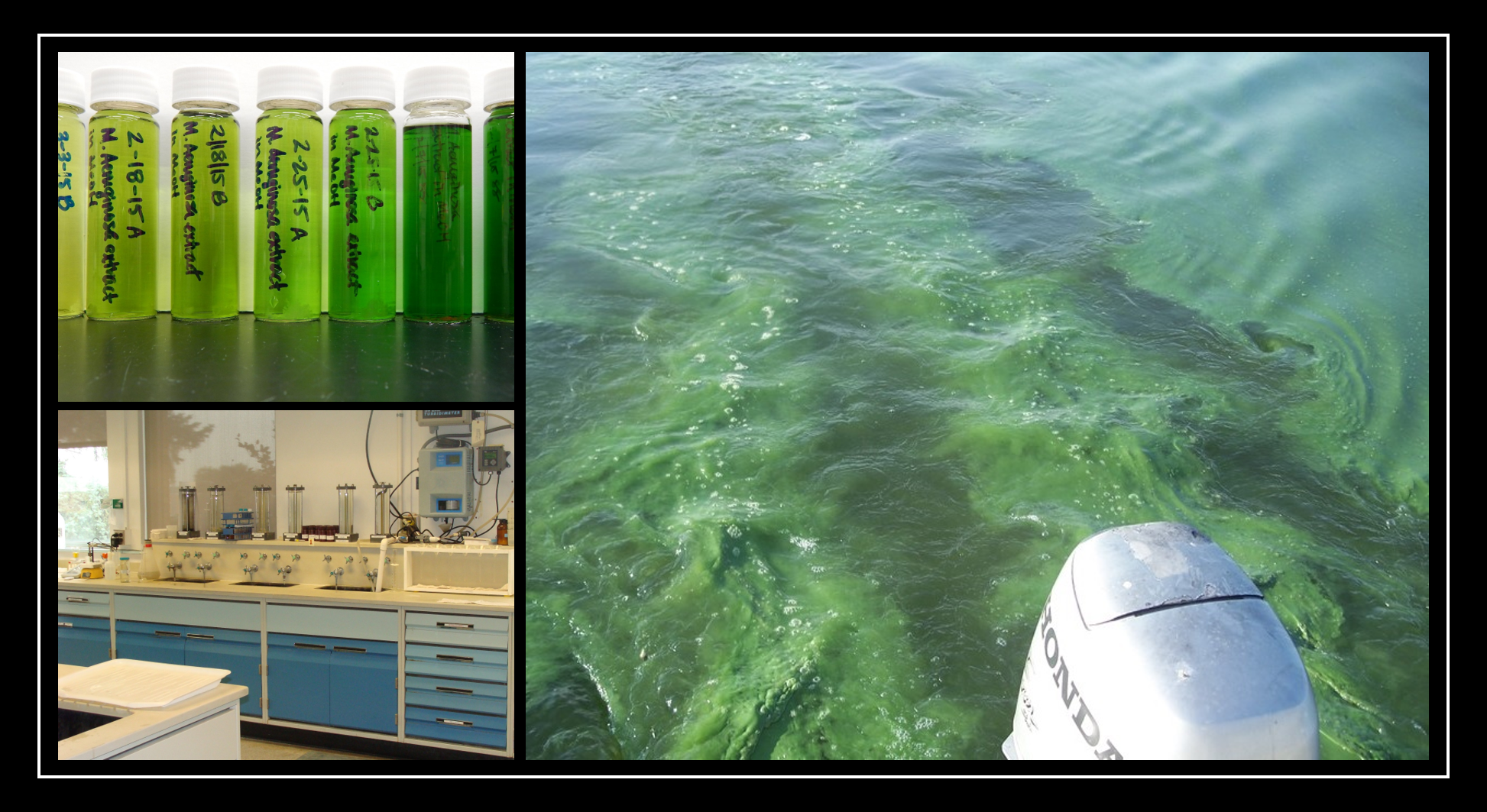Toxicology of Cyanobacteria
Cyanobacteria, Nutrients, and Land Use

In warmer months, lakes and ponds often go green. This is most likely the result of an algae bloom which, increasingly, contain many cyanobacteria. Also known as “blue-green algae,” some species of these tiny, photosynthetic aquatic organisms produce toxins. The impacts of these harmful algal blooms can be significant. They can range from respiratory and gastrointestinal problems in people to the death of animals, even the family pet.
Blooms like these are becoming a more frequent occurrence and are having greater impacts than ever before. Researchers want to better understand how these blooms impact human health, identify the toxicity of the cyanobacteria, predict the probability of bloom occurrence, and share that information widely.
Identifying the Toxicity of Cyanobacteria
- Researchers are using fluorescence-based technologies to detect unique cyanobacteria organisms. Different types of algae and cyanobacteria produce toxins that are harmful to organisms living in the water and to people and even pets that drink or swim in the water. The aim of this research is to correlate the specific spectra of the cyanobacteria with their unique structural features. Researchers believe that the specific spectra, or changes in the spectra, may be an early predictor for toxin production.
- From this data, researchers hope to identify the specific cyanobacteria that may be producing the toxins.
- More research is being done to determine biomarkers and bioaccumulation of cyanotoxins, and if there are any impacts related to animals that people consume as food.
- Researchers are comparing algal bloom extracts with that of the pure toxins mixture in the bloom. Extracts are almost always more toxic than the sum total of the known toxins in them. This has been ascribed to “unknown toxins” but can also be due to endotoxins – a toxin that’s present but released when the cell disintegrates -- in the algal cell walls. The research looks at bloom extracts with and without endotoxins to obtain data that may better indicate the presence of novel algal toxins in blooms. Toxin mixtures are also being explored through this research.
- Researchers are working to develop methods to confirm biologic evidence of exposure to cyanotoxins among humans and animals, and are conducting some in vitro work to further characterize potential health effects using the population-based epidemiology approach and existing health databases.
STAR Grant: Biosensor for Cyanotoxins and Cyanobacteria
Through a 2008 EPA Science to Achieve Results (STAR) grant, EPA worked to develop piezoelectric-excited millimeter-sized cantilever sensors (PEMC) for cyanotoxins in source waters, treated waters, and system waters. The sensor would be designed to measure in a field-deployable, rapid format, in 15 minutes, so that cyanotoxin hazard and management decisions can be made in a timely fashion.
